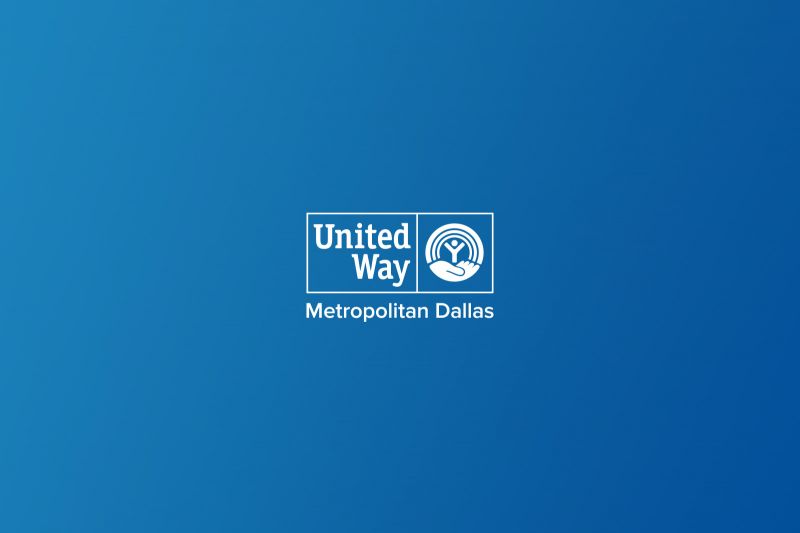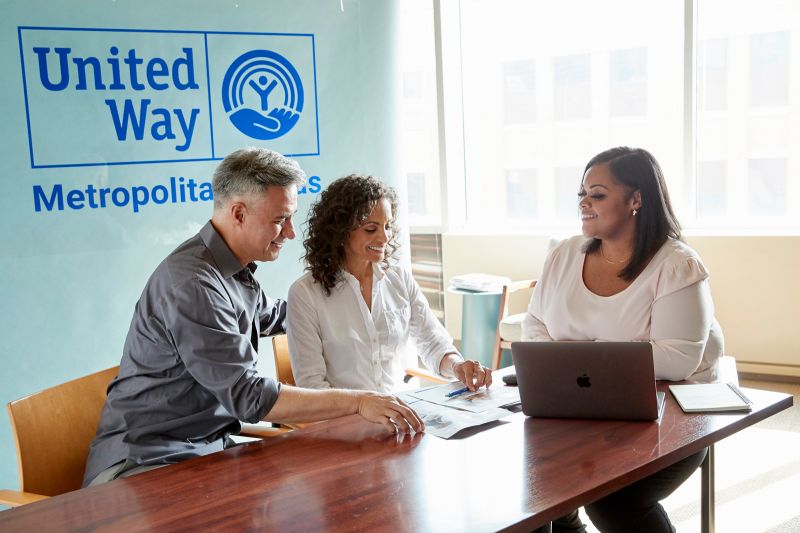How Technology and Innovation Can Help Improve Access to Healthcare

On Tuesday, Oct. 20, we held the Health Innovation Technology Challenge awards event, where we brought together local health care leaders, technology experts and community advocates to highlight the role of innovation in improving access to health care.
The social innovation competition enabled us to identify, elevate and activate game-changing, technology-fueled approaches to increasing access to preventive pediatric care and improving social/emotional wellness and mental health in North Texas. During Tuesday’s event, we announced $1 million in prizes, which will empower the winning organizations to activate their technology solutions throughout the region. Click here to view the winners of the challenge and watch a video recap of the awards event.
Challenges and Opportunities in Health Care
The awards event also include a fireside chat with two local health care leaders, and co-chairs of the Health Innovation Technology Challenge: Jim Hinton, CEO of Baylor Scott & White, and John Olajide, founder and CEO of Axxess. Moderated by Charlene Lake—senior vice president of corporate social responsibility and chief sustainability officer at AT&T, and board chair for United Way of Metropolitan Dallas—the discussion explored the importance of health in our community, the role of innovation and technology in the delivery of care, and how we can make health care more equitable.
Read on for highlights of their Q&A:
Charlene Lake: Why is it so important to identify and elevate innovative solutions to some of the community’s biggest challenges in health care? Is innovation lacking in the health care industry?
Jim Hinton: I think as a result of COVID, a lot of the issues in health care have been laid bare. We’ve seen that people haven’t been able to consistently access health care, lifesaving treatments, therapies, testing. The traditional health care system has not been able to meet a lot of those needs. The promise of this Health Innovation Technology Challenge is that, collectively, we can bring together companies that have new ideas, new approaches and that can partner with the existing health care systems to solve some of those problems that became so evident during COVID.
John Olajide: Technology is fundamental in making sure we can build healthier societies, help people become more educated and bridge all the inequities that exist. I think we have new opportunities to lean in and see how we can bridge the digital divide, leverage technology to eliminate disparities and use a lot of innovation. What we’ve done is made sure we’ve opened our infrastructure to more innovators, like you’ve done at AT&T, and say, “You don’t have to reinvent the wheel.” A lot of the things that we’ve solved for already—we can expand the reach of our technology and ensure that by leveraging innovation, we can make a difference in our communities.
Lake: How does health fit into the idea of building communities that thrive?
Olajide: Health is really the foundation for our community. I’ve heard someone say education and health are two sides of the same coin. For example, if students cannot show up healthy, they cannot learn. The analogy I like to give is that we’re all in a boat, rowing forward. If there are only three of us who are healthy and rowing that boat forward, and there’s 10 of us in that boat, those three are working really, really hard. As we’re looking to build stronger societies, it’s important to make investments to ensure the entire community comes along and we’re all empowered to participate. When we can all row the community forward, we can go faster and we can go farther with less strain on everyone.
Lake: At United Way, we recently launched Aspire United 2030, a set 10-year goals that focus on three pillars of impact: education, income and health. Why is the intersection between these three areas of impact so important?
Hinton: At United Way, we talk about talk about education, income and health and strategize about ways to improve them individually. But it’s with the recognition that they all have to fit together. It’s about isolating on them to ensure that there’s progress, but not hardening the silos between them, which would prevent us from bridging the issues together. From the point of view of Baylor Scott & Health, let’s say we have an employee with a daughter who isn’t able to access health care on a consistent basis. So the mom is missing work and staying home with the child, as any parent would do, and it’s preventing them from earning an income to support their family. So all of those things fit together. As John mentioned, if we have fewer and fewer individuals who can access education, income and health, the strain on our society is greater.
Lake: That’s such an important point: They are so intertwined, if you pull the thread of one of them—education, income or health—it can really rupture the fabric of the entire community.
Hinton: Yes. And you know, Texas has big aspirations as a state. We’re attracting businesses in record numbers. We have people coming here who are expecting to have access to services, and businesses are expecting to have access to workers. The education system has to be able to produce individuals who can serve in these really critical roles. It all fits together.
Lake: What is the area where you see the greatest need for innovation in the health care space?
Olajide: We need to innovate about how we take care of people in general. Right now there’s the burnout issue in health care, given the pandemic. How do we innovate to ensure we’re taking care of the people who provide care? There are ways that we can optimize the workforce to make sure people are more motivated to show up and bring their whole selves to work to take care of people. It’s also about how people get care out in the community. I think people need to be more educated about wellbeing overall. The health care delivery system we have is, in a sense, upside down. A lot of the costs are dedicated to care for people in critical care settings, where in other parts of the world, there’s a lot spent on preventing care, education, wellbeing. I think there’s a lot of innovation that’s needed there. And then, from a technology perspective, there’s also a lot of fragmentation that exists in health care. If I left Texas and went to Florida, how can I take my health care record in a very portable manner to enable folks who need to care for me to intervene easily? The technology exists for that to happen—the issue is, how do we innovate to bring policy, community, business and all that together to pull that all together?
Lake: Jim, where would you start to provide a heavy dose of innovation in health care, from a provider standpoint?
Hinton: Societies where the most people have insured access to health care are healthier than societies that don’t. We need to expand coverage to people in Texas who don’t have it. The way to do that, without breaking the bank of the state or other payors of health care, is to restructure health care in such a way that it’s less expensive to use. We have the technology to do that, but they’re not evenly applied, especially to people who are in underserved areas. How do we take technology—like the apps on our phones—and translate that to provide health care to somebody in a disadvantaged area of our community? I think that is the opportunity. Of course, there’s a lot that’s right about health care. But it’s time that we expand it and reimagine it in such a way that more people have access to lifesaving therapies and treatments.
Lake: Through this program, United Way was able to bring together healthcare system leaders, corporate partners, entrepreneurs, philanthropies to rally around a common cause. Why is it so critical to be able to unite collaborative partners in this way?
Olajide: Together, we can accomplish so much more. No one person alone can cater to the needs of the entire community. We’re all on the same team, and we all bring different pieces together—civic, nonprofit, corporations, schools. It’s important in how we’re aligned so we can take care of the entire spectrum of society. When we’re rowing together, we can accomplish our goals much faster, build a stronger community and go farther.
Hinton: I’ve yet to meet a person who’s immune to the problems we’ve been talking about today—inequality and income, inequality and health. Because of that, we’re all in it together. What’s great about Texas is, when we come together, we are unstoppable. Why not step up and face these problems that have burdened us for quite some time? What I love about Texas is the attitude of, “We can do this. There’s no problem we can’t solve.”
Tags

Join the Movement
As our Health Innovation Technology Challenge demonstrated, we believe in the power of unity and equity to create lasting change. We invite you to Live United and join the movement to improve access to health, as well as education and income, throughout North Texas. Click here to make a donation or join one of our Giving Societies today.



